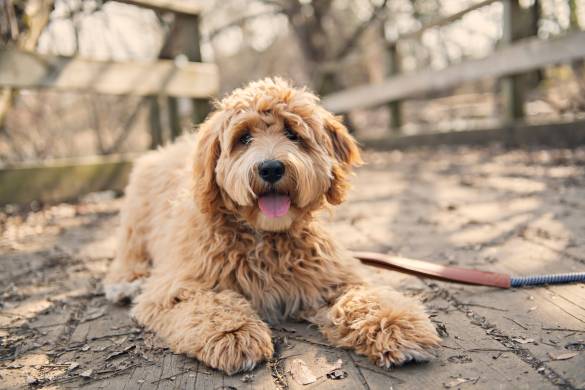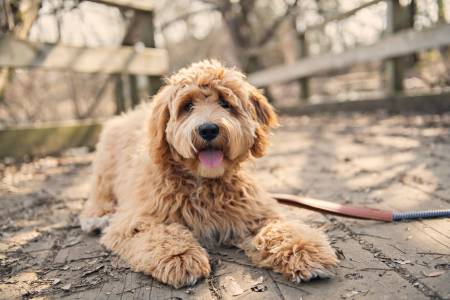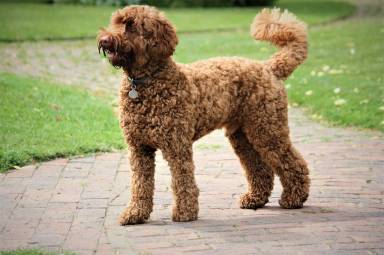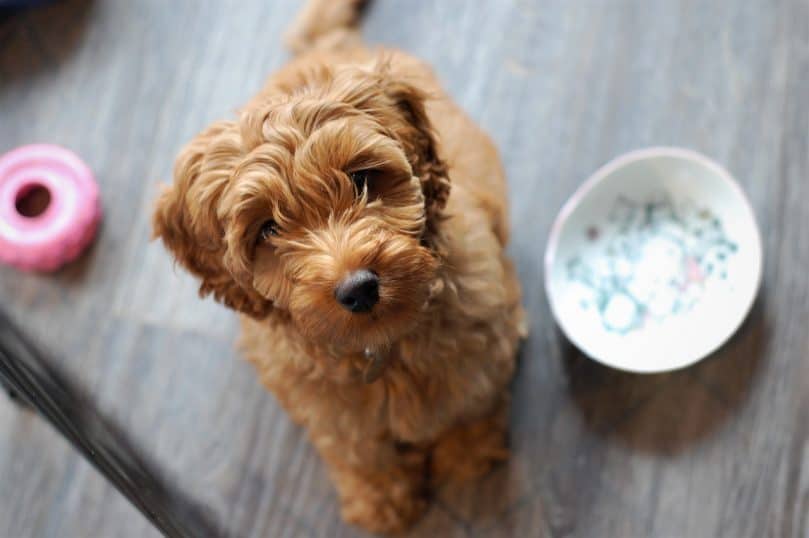Connect with a verified veterinarian in minutes. Licensed vets are available 24/7 to answer your questions. No need to worry about your furry family member.
So you heard Labradoodles don’t shed, and you made the purchase. Unfortunately, your labradoodle is now starting to shed (ouch!), and you are clueless has to why.
Many people also believe Labradoodles are hypoallergenic and do not shed. However, they soon realized otherwise. In reality, there is almost no dog that doesn’t shed. It’s just that some shed very little and insignificant strands of hair compared to others that do so excessively.
Now that it’s apparent that Labradoodles shed, the question is, why? Before that, let’s look into the history of this breed of dogs.
Origin of Labradoodles
Labradoodles joined the wagon of hybrid dogs in the mid-1900s. The breed, although not recognized as a major one, comes from the combination of Labrador retriever and Poodle. These two pure breeds of dogs were crossed to bring about a labradoodle. Labradoodles, due to having two parents are not all the same. There are few differences in their genes. Some take more of the retriever gene and some, more of the poodle.
In some cases, which is always hard to tell, some have the same ratio of both parents in them. Labrador retriever is known to shed a lot of hair. And many who have pet allergies do not like to keep them. Due to this, many purchase a labradoodle because they want a very fluffy and long-haired dog that won’t shed. Labrador Retrievers have long hairs, but they shed a lot. At the same time, the poodle has very little hair and does not shed.
So, because a labradoodle can give both long hairs and not shed, many opt to purchase them. But why do they shed if they are commonly known as hypoallergenic? Let’s answer that.
Why a Labradoodle Sheds
Many yearn to know the answer to this after being disappointed due to their labradoodle shedding after believing they don’t. Labradoodles have two parents. So, this means that they inherit genes in different ratios.
If a labradoodle is 75% Labrador retriever, and 25% poodle, it will most likely shed and be less hypoallergenic. However, if it’s the other way around, with labradoodle having a 75% poodle gene and 25% retriever, then it will shed a little and be more hypoallergenic. In some situations, a labradoodle may have 50% of each parent. Labradoodles with a 50% equal gene are categorized as the F1, F2, and F3 generation. And because they have an equal gene, they will also shed.
Only a type with more of the poodle gene than retriever will shed less. It may be particularly challenging to know the kind that won’t shed. The best way to tell by just looking or touching the dog is by looking for a labradoodle with curly hairs. The types with curly hairs do not shed much. But the kind that has long straight hairs are more likely to shed.
One important thing to keep in mind is that most dogs shed. Shedding fur is natural for dogs. At some point, dogs shed their hair and grow new ones. The difference is the quantity. While some just shed a few strands, some can shed enough hairs to cover an entire bald dog (it could be that much). This type of excessive shedding is not suitable for people with allergies.

Review symptoms, medications & behavior to keep your pets healthy with a Vet Online in just minutes.
Ask a Vet Live NowLabradoodles that shed less
There are some specific types of Labradoodles’ generations that shed lesser than others. Here are some:
F1B
This generation is 75% poodle and just 25% of Labrador retriever, making the generation shed less.
F1BB
This generation is with a healthy poodle gene. We have a whopping 87.5% poodle and 12.5% Labrador retriever. Many who cherish a fluffy, non-shedding hypoallergenic dog should go for this generation. They are usually with curly hairs.
F2BB
This generation is similar to F1BB. The generation has 81.25% of Poodle and 18.75% of the labrador retriever.
How to reduce my labradoodle shedding
If you are yet to purchase a labradoodle, then the suggestions above may prove helpful in getting a labradoodle that doesn’t shed much. However, if you already have one that sheds, then the tips below will be beneficial. Follow these simple but useful tips to reduce hair shedding in labradoodle:
Regular brushing
Brushing should be regular. Make it a routine to always brush your labradoodle each day if possible. It doesn’t have to be for long, but it must be consistent. It reduces the accumulation of hair strand deposits in the fur.
Brushing doesn’t require any special technique. All that is necessary is to purchase an ideal dog brush. Most times, due to weather conditions, dogs grow or shed their fur. When the temperature is hot, then dogs will most likely start to shed. Take note of this and use the knowledge to your advantage.
Bathing
Bathing? Yes, bathing works. And don’t fret, you don’t have to do it every day. Just endeavor to do it two or three times a month. By doing this, the amount your labradoodle sheds will reduce a lot.
When bathing, ensure to use a suitable shampoo that will not affect the fur of your dog. Shampoo that leaves the hair dry is not ideal. Look for good shampoos to use.
Note: Appropriate rest and good nutrition can also help to reduce shedding. Your dog should rest after going through stress, and good food nourishes labradoodles.
What does excessive shedding mean?
Excessive shedding, which is accompanied by bald spots and itching, could be a severe health problem that will require you to see a veterinarian.
As you enjoy the company of your labradoodle, use the tips above to get familiar with possible reasons why they shed, and see what you can do to reduce it.
Connect with a verified veterinarian in minutes. Licensed vets are available 24/7 to answer your questions. No need to worry about your furry family member.

Kyoko
Kyoko is from a family of 3 and moved to New York with her parents and siblings when she was 13. Kyoko is fond of spending a great amount of time with pets, specifically her beagle Luna and cat Missy. Her boyfriend often complains that she spends too much time giving attention to their animals. Kyoko has written dozens of articles concerning pets and is aiming at owning a pet shop one day!
Review symptoms, medications & behavior to keep your pets healthy with a Vet Online in just minutes.
Ask a Vet Live Now




